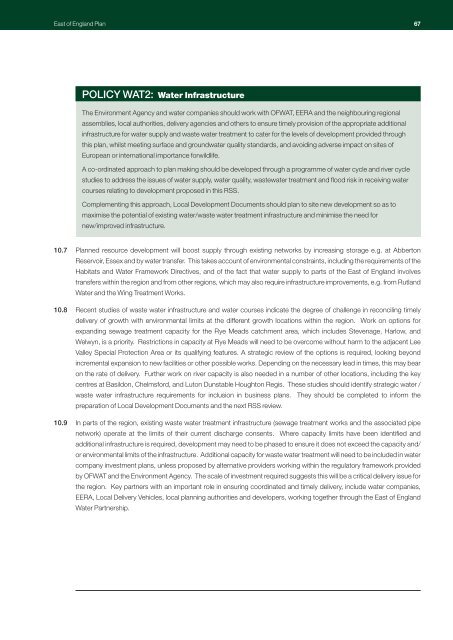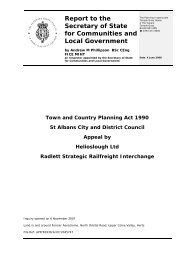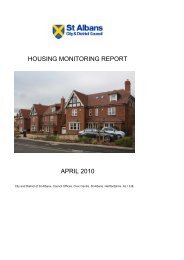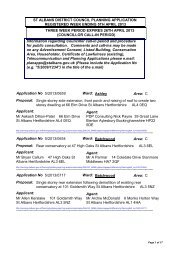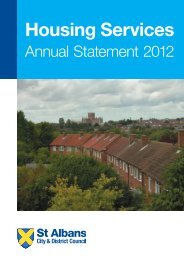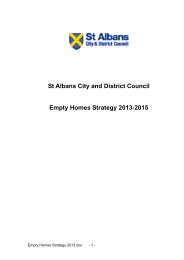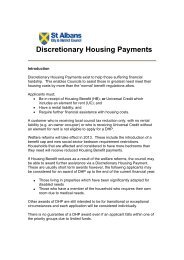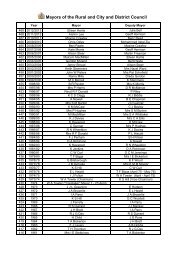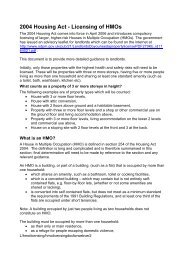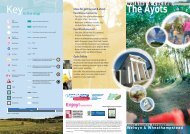RSS East Of England Plan - Broads Authority
RSS East Of England Plan - Broads Authority
RSS East Of England Plan - Broads Authority
Create successful ePaper yourself
Turn your PDF publications into a flip-book with our unique Google optimized e-Paper software.
<strong>East</strong> of <strong>England</strong> <strong>Plan</strong> 67<br />
POLICY WAT2: Water Infrastructure<br />
The Environment Agency and water companies should work with OFWAT, EERA and the neighbouring regional<br />
assemblies, local authorities, delivery agencies and others to ensure timely provision of the appropriate additional<br />
infrastructure for water supply and waste water treatment to cater for the levels of development provided through<br />
this plan, whilst meeting surface and groundwater quality standards, and avoiding adverse impact on sites of<br />
European or international importance forwildlife.<br />
A co-ordinated approach to plan making should be developed through a programme of water cycle and river cycle<br />
studies to address the issues of water supply, water quality, wastewater treatment and flood risk in receiving water<br />
courses relating to development proposed in this <strong>RSS</strong>.<br />
Complementing this approach, Local Development Documents should plan to site new development so as to<br />
maximise the potential of existing water/waste water treatment infrastructure and minimise the need for<br />
new/improved infrastructure.<br />
10.7 <strong>Plan</strong>ned resource development will boost supply through existing networks by increasing storage e.g. at Abberton<br />
Reservoir, Essex and by water transfer. This takes account of environmental constraints, including the requirements of the<br />
Habitats and Water Framework Directives, and of the fact that water supply to parts of the <strong>East</strong> of <strong>England</strong> involves<br />
transfers within the region and from other regions, which may also require infrastructure improvements, e.g. from Rutland<br />
Water and the Wing Treatment Works.<br />
10.8 Recent studies of waste water infrastructure and water courses indicate the degree of challenge in reconciling timely<br />
delivery of growth with environmental limits at the different growth locations within the region. Work on options for<br />
expanding sewage treatment capacity for the Rye Meads catchment area, which includes Stevenage, Harlow, and<br />
Welwyn, is a priority. Restrictions in capacity at Rye Meads will need to be overcome without harm to the adjacent Lee<br />
Valley Special Protection Area or its qualifying features. A strategic review of the options is required, looking beyond<br />
incremental expansion to new facilities or other possible works. Depending on the necessary lead in times, this may bear<br />
on the rate of delivery. Further work on river capacity is also needed in a number of other locations, including the key<br />
centres at Basildon, Chelmsford, and Luton Dunstable Houghton Regis. These studies should identify strategic water /<br />
waste water infrastructure requirements for inclusion in business plans. They should be completed to inform the<br />
preparation of Local Development Documents and the next <strong>RSS</strong> review.<br />
10.9 In parts of the region, existing waste water treatment infrastructure (sewage treatment works and the associated pipe<br />
network) operate at the limits of their current discharge consents. Where capacity limits have been identified and<br />
additional infrastructure is required, development may need to be phased to ensure it does not exceed the capacity and/<br />
or environmental limits of the infrastructure. Additional capacity for waste water treatment will need to be included in water<br />
company investment plans, unless proposed by alternative providers working within the regulatory framework provided<br />
by OFWAT and the Environment Agency. The scale of investment required suggests this will be a critical delivery issue for<br />
the region. Key partners with an important role in ensuring coordinated and timely delivery, include water companies,<br />
EERA, Local Delivery Vehicles, local planning authorities and developers, working together through the <strong>East</strong> of <strong>England</strong><br />
Water Partnership.


